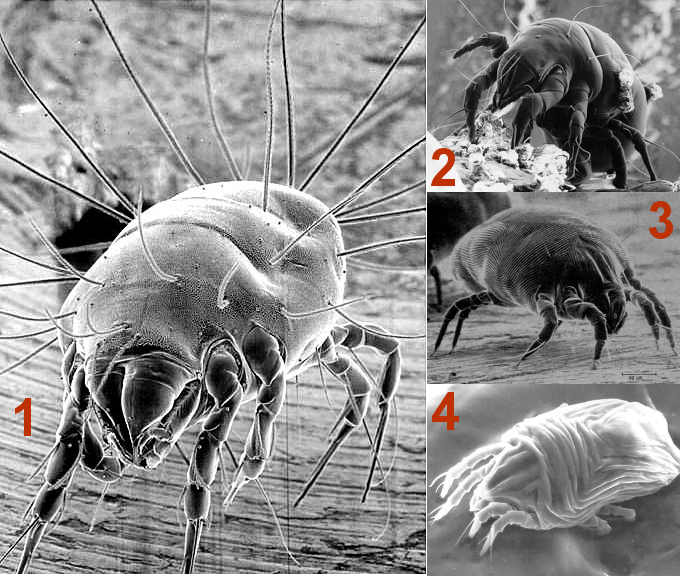A list of dust mites species found in Australia which induce allergic symptoms such as hay fever (rhinitis), eczema or asthma. We’ve listed the dust mites’ habitats, likely dust mite distribution in Australia and dust mite food sources. We’ve listed the most common and well researched Australian dust mites. The dust mite species in bold text are considered the biggest contributors to allergies.

The Four Most Common Allergenic Dust Mite Species
1. Blomia Tropicalis 2. Dermatophagoides Pteronyssinus 3. Dermatophagoides Farinae 4. Euroglyphus Maynei
It’s worth noting that research still regularly discovers new dust mite species and it’s not fully explored which mites cause dust mites allergies, so this table is not exhaustive. Also, the bulk of dust mite research occurs in Northern Hemisphere countries.
Table of Dust Mite Species That Cause Allergies
| Dust Mite Species | Dust Mite’s Preferred Environment | Dust MIte Food Sources |
|---|---|---|
| Dermatophagoides pteronyssinus European House Mite, House dust mite, Dust mite Means: ‘Skin-eating feather mite’One of the three or four most significant mites associated with allergies. | Higher humidity (coastal areas in Aust).Recognised as one of the most significant contributor to household allergens in tropical and sub-tropical regions. Probably the most important as is the most widely distributed mite and the most common allergy-causing mite in Australia. Usually co-exists with Blomia tropicalis as they both like high humidity environments. | Food sources: Human & Animal Skin Flakes & other organic debris found in household dust. |
| Dermatophagoides farinae American House Mite, House dust mite, Dust mite | Lower Humidity. More abundant in America than Europe. More common inland. | Food sources: Human & Animal Skin Flakes, Dry stored protein-based foods & grains. |
| Blomia tropicalis Flour/Storage/Grain mite | Most common in tropical areas. Now realised to be significant contributor to indoor allergens in urban dwelling. | Food sources: Cereal products. Has been associated with acute asthma symptoms that requires visit to ER.One of the three most significant mites associated with allergies. |
| Euroglyphus maynei House dust mite, Dust mite | Prevalent in humid areas. Very sensitive to aridity. Common in the Americas. | Food source: Human & Animal Skin Flakes & other organic debris found in household dust. |
| Acarus siro Flour/Storage/Grain mite | Mostly hay & grain stores, cereal based foods, but also found in house dust. More prevalent in rural than urban environments. Can handle semi-arid areas. | Food sources: Flour, cereal products, cheese, hay & dried fruit. |
| Dermatophagoides microceras House dust mite | Identified in the UK, Scandinavia, Holland, Spain & US. This species has not been well researched in other locations | |
| Glycyphagus domesticus Furniture mite, Storage mite & Food mite. | Found in food and grains in warehouses & silos. In houses, it loves infested foodstuffs and damp areas & rotting, old fashioned furniture stuffing. Dies rapidly if in dessicating conditions | Food Sources: Feeds on moulds & fungus. |

Leave a Reply